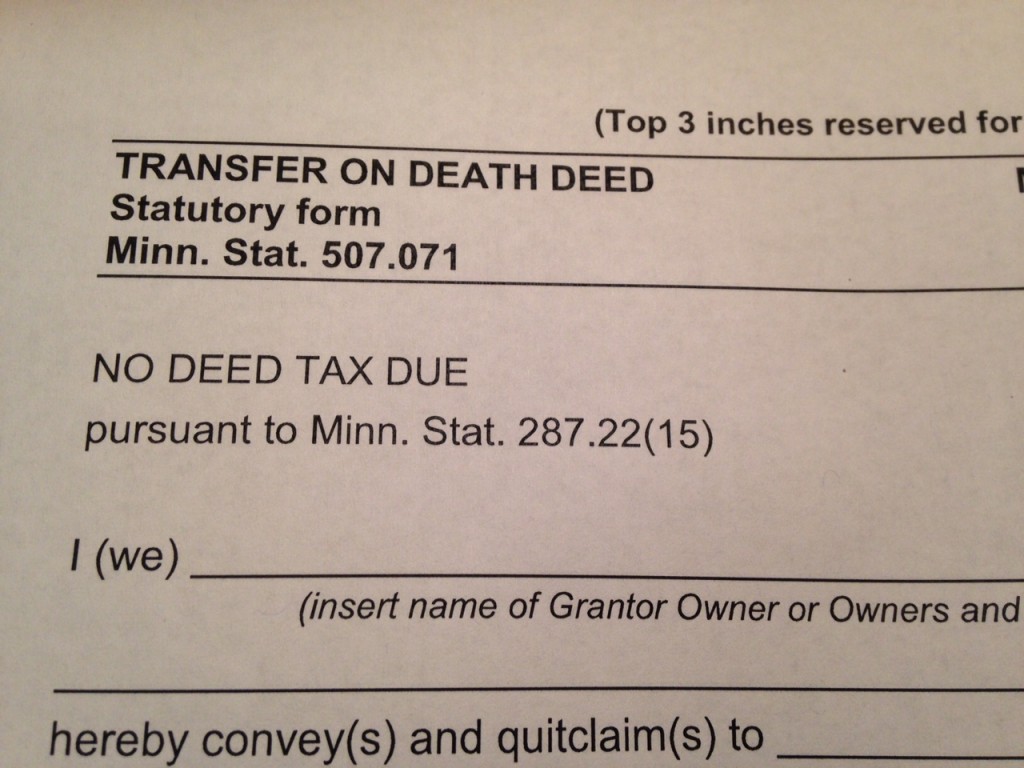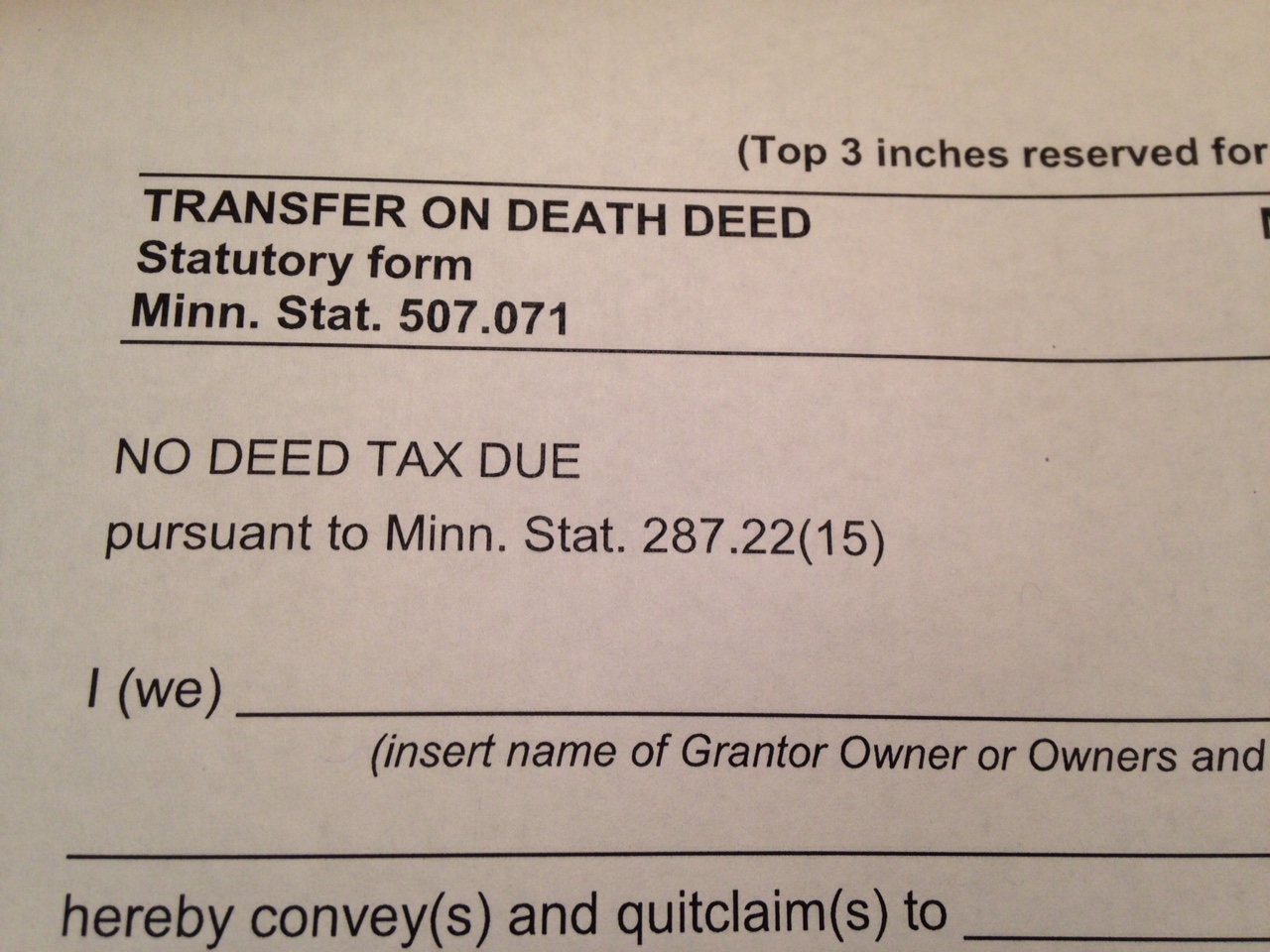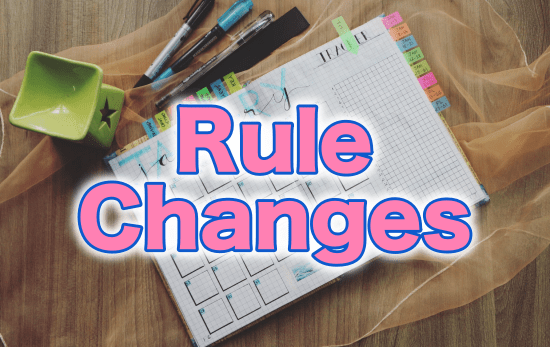TODDS or transfer on death deeds are fantastically inexpensive. When used correctly, these types of documents are fantastic for Minnesota families looking to reduce the risk of probate.
For those looking for online resources, the Minnesota law that govern this method of transferring real property begins within statute 507.071.
That said, because mistakes with land and beneficiary issues can compound, here are a few drafting issues that need to be taken into consideration:
- Titling
- Abstract versus Torrens questions, and
- Identifying the strongest Legal Description.
Luckily, these issues can be avoided upon completing research at the County Recorder’s Office.
What is a Transfer on Death Deed in MN?

A transfer on death deed, also called a “TOD deed” or “TODD” is a piece of paper that explains who should get your real estate (or house) on your death without the need of seeking approval from a probate court.
For a document of this nature to be effective, a transfer on death deed must be completed and recorded in the County where the property is located.
Can a Minnesota TODD transfer a piece of property to more than one person?
Yes, a TODD can transfer real estate to more than one person or entity (like a charity or church).
For example, a mother can use a transfer on death deed in Minnesota to transfer the family cabin in equal shares to her three children. Each child is a grantee beneficiary.
The possibilities for a TODD can be as creative or exotic as your estate requires. On the other hand, the more extreme a TODD becomes, the more likely a different transferring tool should be considered.
What can go wrong with a Transfer on Death Deed?

A few detailed examples how or why a TODD can go wrong includes the following:
- An incorrect legal description,
- A grantee beneficiary dies before the owner of the property dies,
- If the owners of a property were married, the remaining spouse fails to file an Affidavit of Survivorship,
- Names of the beneficiaries are misspelled,
- The person filling out the form uses the wrong form,
- A person fails to record the document,
- A person accidentally revokes the deed,
- The grantor fails to consider estate taxes,
- The grantor does not have each document notarized and witnessed correctly, and etc.
Where to find forms for a Transfer on Death Deed
If a person has the time, consider visiting your local recorder’s office. As an alternative, consider reviewing this list of forms.
What happens when a TODD is recorded in Minnesota?
The County’s recorder office charges a fee to file a transfer on death deed.
A TODD does not kick into effect until the owner of the real estate dies. In other words, a transfer on death deed is not effective nor does anything happen when it is recorded.
Instead, the property does not change hands until the owner or grantors die. If the grantor dies and the document was valid, the property transfers to the designated recipient.
Need help with a MN Transfer on Death Deed?
More Transfer on Death Questions?
Estate Attorney Jasper Berg






